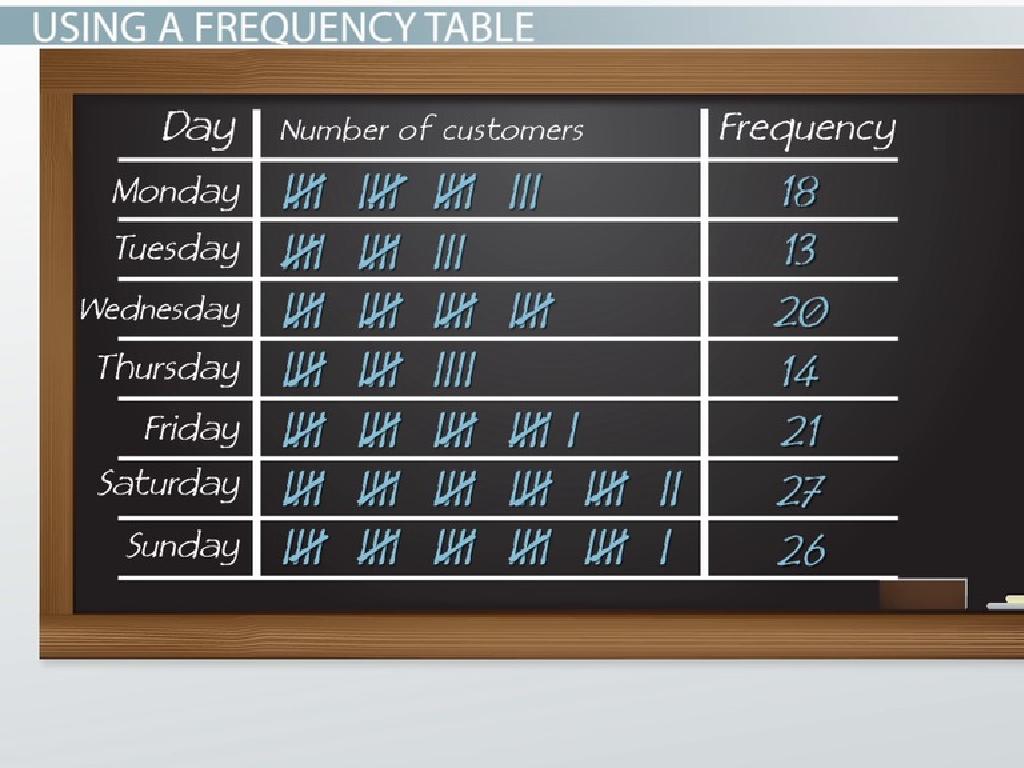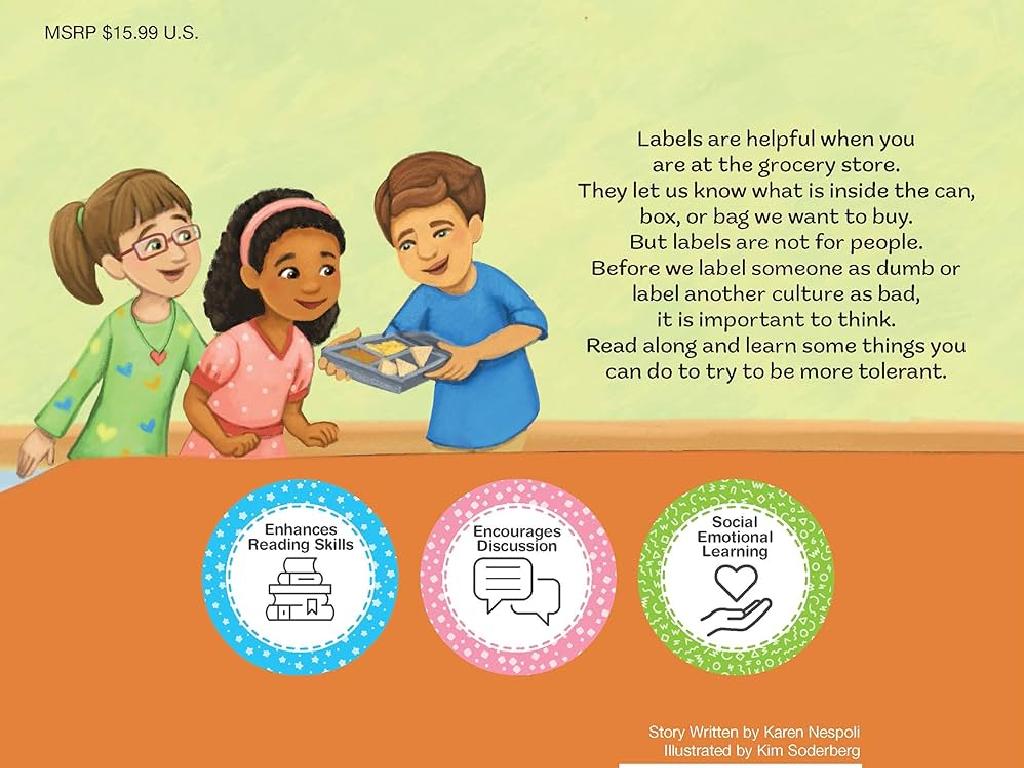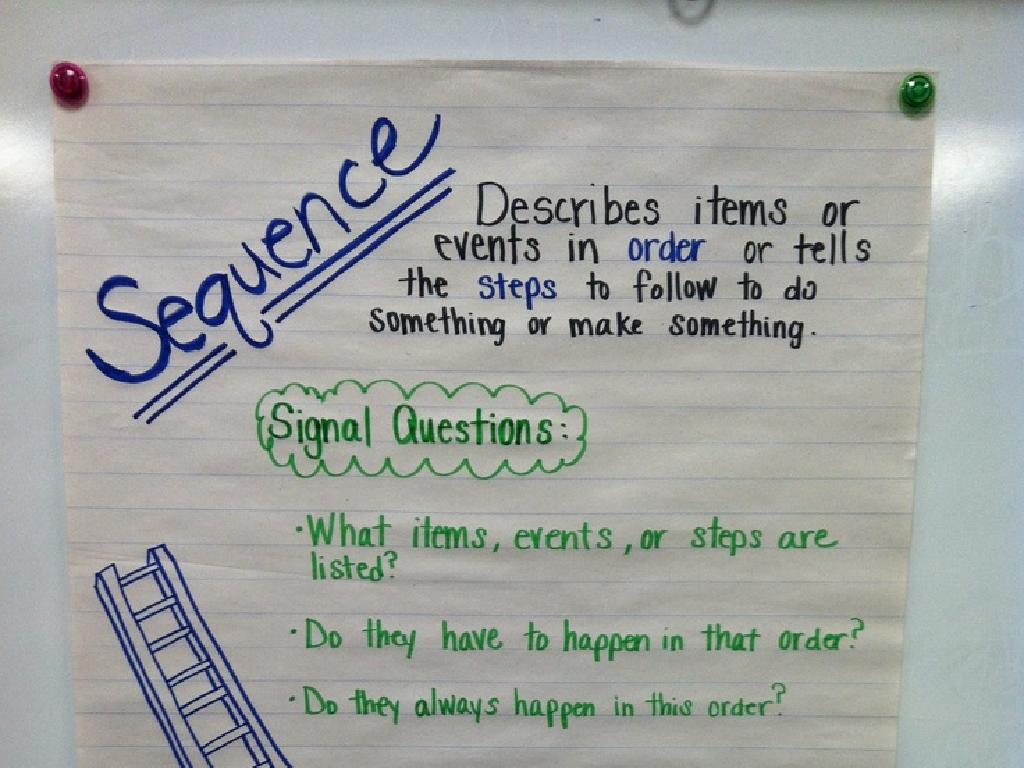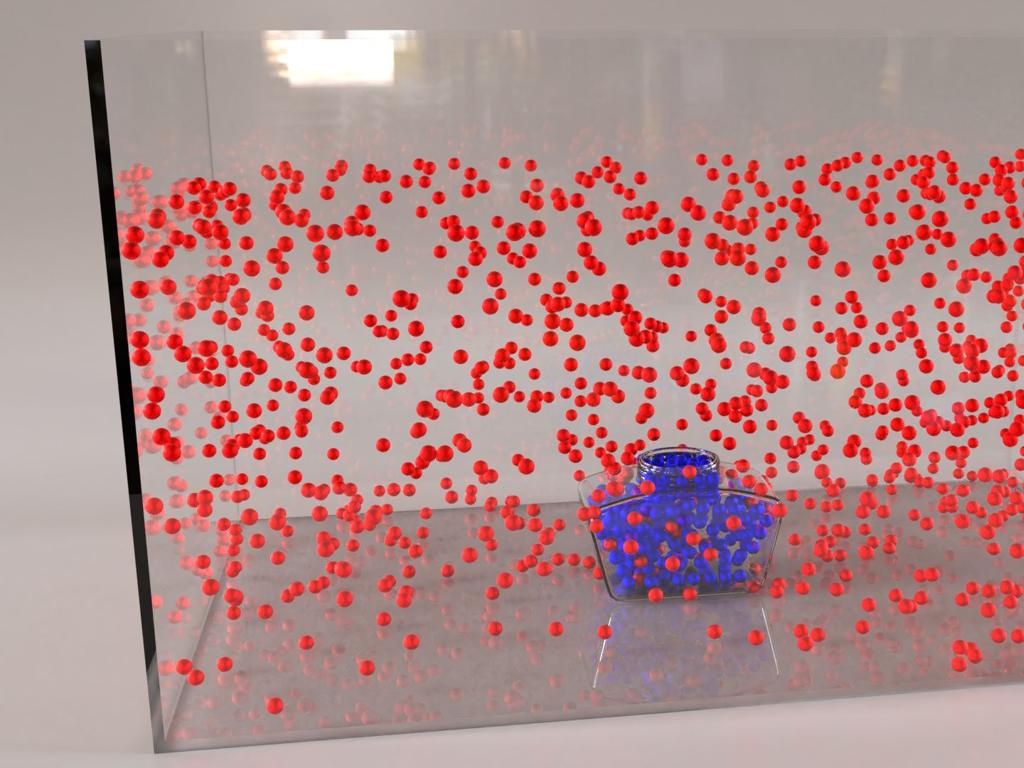Convert Metric Mixed Units
Subject: Math
Grade: Fifth grade
Topic: Metric Units Of Measurement
Please LOG IN to download the presentation. Access is available to registered users only.
View More Content
Welcome to Metric Units!
– Understanding metric measurements
– It’s a decimal system of measurement used worldwide.
– Reasons for using the metric system
– It’s standardized, precise, and easy to convert.
– Explore meters, liters, and grams
– Meters measure length, liters volume, and grams mass.
– Practice converting between units
– Convert larger to smaller units by multiplying, and vice versa by dividing.
|
This slide introduces students to the concept of metric units of measurement, which is a decimal-based system of measurement used globally. Emphasize the importance of the metric system in science and international trade due to its standardization and ease of conversion. Highlight the most common metric units such as meters for measuring length, liters for volume, and grams for mass. Engage students with examples of each unit and provide practice problems for converting between larger and smaller units, reinforcing the concept that in the metric system, we multiply to convert to smaller units (e.g., meters to centimeters) and divide to convert to larger units (e.g., centimeters to meters). This foundational knowledge will be crucial for their understanding of measurement in real-world contexts.
Understanding Metric Mixed Units
– Define metric mixed units
– Mixed units combine different metric measurements, like meters and centimeters.
– Everyday examples of mixed units
– Using mixed units: buying fabric in meters and centimeters, or measuring a person’s height.
– Why conversion is essential
– Converting units helps in comparing, adding, or subtracting measurements accurately.
– Practice converting units
|
This slide introduces students to the concept of metric mixed units, which are combinations of different metric measurements used together, such as meters and centimeters. Provide relatable examples like purchasing fabric or measuring height to help students understand the practical use of mixed units in everyday life. Emphasize the importance of being able to convert between these units for accurate comparison and calculation. Encourage students to practice converting units with real-world examples to solidify their understanding.
Converting Metric Mixed Units
– Convert larger to smaller units
– Multiply by powers of 10 (e.g., 1 km to 1000 m)
– Convert smaller to larger units
– Divide by powers of 10 (e.g., 1000 g to 1 kg)
– Use metric conversion factors
– Understand factors like 10, 100, 1000
– Practice with real examples
– Convert 5 km to meters or 3000 ml to liters
|
This slide introduces the concept of converting between different metric units. Emphasize that the metric system is based on powers of 10, making conversions straightforward. Teach students to multiply when converting from larger to smaller units (kilometers to meters, liters to milliliters) and to divide when converting from smaller to larger units (grams to kilograms). Provide a clear explanation of conversion factors and how they are used to switch between units. Include practice examples to solidify understanding, such as converting 5 kilometers to meters or 3000 milliliters to liters. Encourage students to work through these examples and come up with their own to share.
Let’s Practice Together: Metric Conversions
– Convert 3 kg 450 g to grams
– 3 kg 450 g equals 3450 grams (1 kg = 1000 g)
– Convert 2 L 75 mL to milliliters
– 2 L 75 mL equals 2075 milliliters (1 L = 1000 mL)
– Step-by-step conversion process
– Multiply or divide to convert between units
– Understanding unit conversion
– Grasping how to switch between mixed metric units
|
This slide is an interactive class activity designed to help students understand the process of converting metric mixed units. Start with the examples provided, explaining that to convert kilograms to grams, they need to multiply by 1000 (since 1 kg = 1000 g). For the first example, multiply 3 kg by 1000 and then add the 450 g. For the second example, convert liters to milliliters by multiplying by 1000 and then adding the additional milliliters. Walk through each step on the board, asking students to participate in the process. Emphasize the importance of understanding the base units and their conversions. Provide additional examples if time allows and encourage students to try their own conversions as homework.
Metric Conversion Tricks and Tips
– Memorize metric unit order
– Use mnemonic devices to remember the order: kilo, hecto, deka, base, deci, centi, milli.
– Learn the decimal moving technique
– To convert, move the decimal point left or right depending on the units.
– Practice with varied examples
– Solve different problems to gain confidence.
– Understand metric conversion
|
This slide aims to provide students with helpful strategies for converting between metric units. Emphasize the importance of memorizing the order of metric units, perhaps by using a mnemonic like ‘King Henry Died By Drinking Chocolate Milk’ which stands for kilo-, hecto-, deka-, base unit, deci-, centi-, and milli-. Teach them the ‘move the decimal’ technique, which is a simple way to convert between units without complex calculations. Provide a variety of examples for the students to practice, ensuring they cover conversions between different metric units. Reinforce the concept that understanding and mastering metric conversions is a skill that improves with practice.
Class Activity: Metric Conversion Challenge
– Pair up for conversion problems
– Convert metric mixed units
– Use conversion charts to switch between units like km to m, or g to kg
– Discuss methods and solutions
– How did you approach the problem? Did you use a formula or a chart?
– Present findings to the class
|
This activity is designed to encourage collaboration and application of metric conversion knowledge. Students will work in pairs to tackle a series of problems that require them to convert between different metric units, such as kilometers to meters or grams to kilograms. Provide students with conversion charts or formulas as necessary. After solving the problems, they should discuss their methods and how they arrived at their solutions. Finally, each pair will share their answers and the strategies they used with the rest of the class. This will help reinforce their understanding and allow them to learn from each other’s approaches. Possible activities could include converting measurements for a recipe, determining distances between locations on a map, or converting weights for science experiments.
Conclusion: Mastering Metric Conversions
– Review conversion steps
– Remember to multiply or divide to convert units, like km to m or g to kg.
– Understand conversion importance
– Converting units is crucial in recipes, science, and travel.
– Real-world application prep
– Recap and questions
– Let’s review what we’ve learned and ask any last questions.
|
As we wrap up today’s lesson, it’s important to go over the steps for converting metric mixed units once more. Emphasize the multiplication or division process depending on whether they are scaling up or down the units. Discuss why it’s important to understand these conversions, as they are used in everyday life, such as cooking, scientific measurements, and even when traveling to different countries. Prepare the students for the next lesson by telling them they will be applying what they’ve learned to real-world scenarios, which will help solidify their understanding. Encourage students to ask questions if they’re unsure about any part of the lesson to ensure they’re ready for the practical applications tomorrow.






